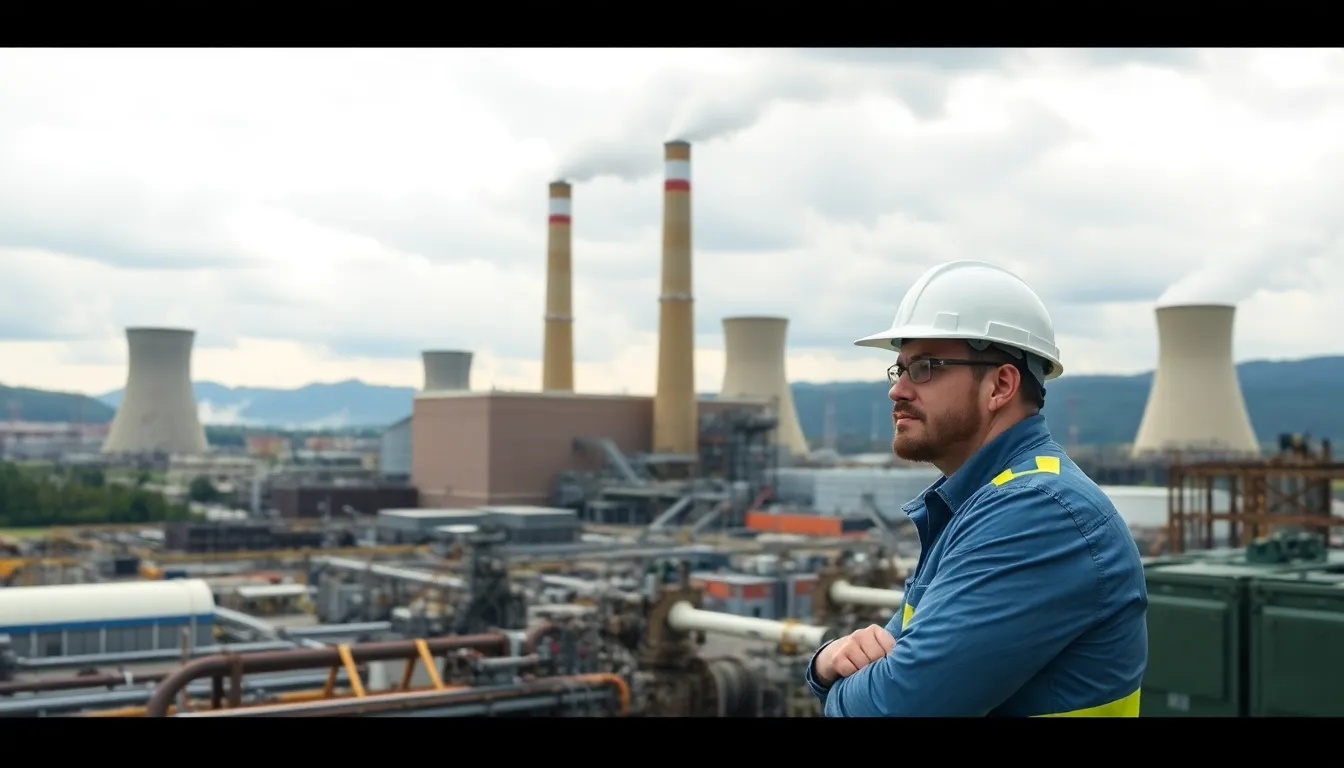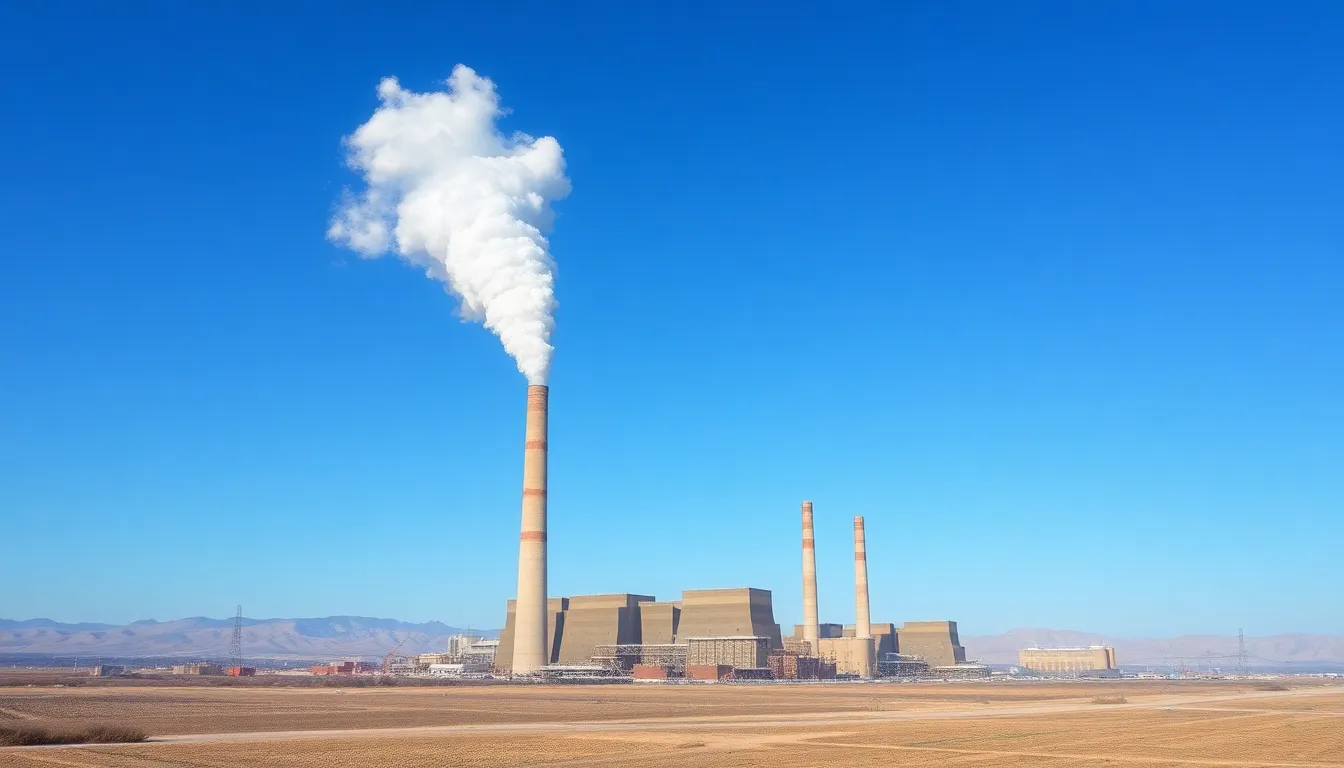Phone:
(701)814-6992
Physical address:
6296 Donnelly Plaza
Ratkeville, Bahamas.

In a world racing toward renewable energy, coal power plants seem to be the tortoises in a high-speed rabbit race. They’ve been around for ages, stubbornly chugging along while everyone else is busy trying to be eco-friendly. But don’t count them out just yet! The latest coal power plant news reveals a surprising twist in the tale, with innovations and updates that might just make you rethink the black gold’s future.
From advancements in clean coal technology to unexpected policy shifts, the coal industry is still kicking and screaming for relevance. It’s a wild ride filled with unexpected twists, and it’s worth keeping an eye on. So grab some popcorn and dive into the latest buzz—after all, who knew coal could be this entertaining?
New initiatives in clean coal technology demonstrate significant advancements aimed at reducing emissions. Companies are investing in carbon capture systems that filter pollutants from flue gas, improving overall environmental performance. Recent projects in the United States show promise, with one plant achieving over 90% reduction in carbon emissions.
Policy shifts also influence the coal industry landscape. Several governments have announced funding for coal modernization, focusing on efficiency and sustainability. In China, the introduction of stringent regulations aligns with efforts to integrate cleaner technologies in existing coal facilities.
Global demand for coal continues to fluctuate. Recent reports indicate that Asian markets, particularly in India and Southeast Asia, still rely heavily on coal to meet energy needs. In response to this demand, some coal power plants are upgrading their infrastructures to enhance energy output while minimizing environmental impacts.
International agreements on climate change are shaping the future of coal power. Countries committed to reducing greenhouse gas emissions are exploring pathways to transition from traditional coal use. Investments in research and development aim to transition the coal industry toward cleaner energy alternatives.
Innovations in energy storage are making coal power more competitive. Breakthroughs in battery technology allow for better integration of renewable sources with coal plants, creating a hybrid model that utilizes the strengths of both. Emerging trends highlight the adaptability of coal power, showcasing its potential to coexist with renewable forms of energy.
These developments illustrate the evolving narrative surrounding coal power, underscoring its enduring relevance in the global energy mix. The future is defined by a blend of tradition and innovation, emphasizing that coal power can still play a crucial role in a low-carbon economy.

Coal power plants significantly affect the environment, particularly through emissions and water usage. Understanding these impacts is essential for evaluating the future of coal energy.
Coal combustion generates substantial emissions, including carbon dioxide, sulfur dioxide, and nitrogen oxides. These pollutants contribute to climate change and can severely impact air quality. According to the Environmental Protection Agency (EPA), coal plants account for approximately 30% of total U.S. greenhouse gas emissions. Efforts to implement clean coal technologies aim to capture over 90% of these carbon emissions. Despite advancements, air quality remains a concern, leading many regions to require stricter regulations on coal plant operations. Improvements in monitoring systems enhance compliance and awareness of emission levels. Transitioning toward cleaner technologies remains a critical focus in reducing harmful emissions from coal power plants.
Coal power generation requires significant water resources, primarily for cooling processes. The U.S. Geological Survey indicates that coal plants withdraw about 200 billion gallons of water each year. This high demand can strain local water supplies, particularly in arid regions. Additionally, wastewater from these plants can lead to contamination of nearby water sources, introducing heavy metals like arsenic and mercury. Regulations aim to mitigate these adverse effects through improved treatment systems. Innovative practices, including closed-loop cooling, minimize water usage and pollution. Promoting efficient water management techniques remains vital for lessening the environmental impact of coal power facilities.
Technological innovations continue to reshape the coal power sector, focusing on reducing emissions and enhancing efficiency.
Recent advancements in carbon capture and storage (CCS) highlight significant potential for reducing greenhouse gas emissions. Facilities equipped with CCS technology can capture over 90% of carbon dioxide emissions, demonstrating effectiveness in mitigating climate impact. Companies are investing heavily in these systems, with some plants implementing pilot projects to refine their operation. These projects not only benefit the environment, but they also comply with stricter regulatory measures introduced in various countries. As these technologies mature, the coal industry could see a notable increase in its sustainability profile, making coal power a more viable option in a low-carbon economy.
Improvements in efficiency are crucial for coal power plants striving to reduce overall environmental impact. New boiler designs and advanced turbine technologies enable plants to convert more of the fuel’s energy into electricity, with some modern plants achieving efficiency rates of around 45%. Upgrading aging infrastructures allows operators to adapt to higher efficiency standards while minimizing emissions. Moreover, innovations in heat recovery systems enhance energy utilization, further decreasing waste. As coal power plants embrace these technologies, their competitiveness in the energy market can improve significantly, reinforcing their role in the transition towards cleaner energy sources.
Recent policy changes are reshaping the operational landscape of coal power plants. Regulations at both federal and state levels are significantly impacting their viability and modernization efforts.
Federal regulations are increasingly guiding the coal industry’s transition. The Environmental Protection Agency (EPA) has tightened emissions standards, compelling plants to adopt cleaner technologies. Compliance with these standards often involves significant investments in carbon capture systems. As a result, many plants are now targeting emissions reduction of over 90%. Additionally, federal funding initiatives are available to support modernization projects, which help coal facilities upgrade their infrastructure. This support aligns with national climate goals, promoting a gradual shift to cleaner energy sources while recognizing coal’s ongoing role in the energy mix.
State-level initiatives are also crucial to coal power’s evolution. Various states are implementing their own regulations to address emissions and enhance efficiency. For example, some states have introduced incentives for coal plants to retrofit with advanced technologies that improve performance. Others are exploring programs that promote renewable energy alongside traditional coal resources. States like Indiana and Kentucky are leading efforts to balance local energy demands with environmental concerns. These initiatives reflect a commitment to the responsible use of coal while transitioning toward a more sustainable energy future.
Economic dynamics play a crucial role in the persistence and evolution of coal power generation. Factors such as market trends and employment impacts shape the industry’s future.
Market fluctuations in coal pricing affect power generation viability. Recent trends indicate changes in demand, especially in India and Southeast Asia, following increased investments in infrastructure. The International Energy Agency reported that global coal prices experienced a 50% surge in 2021, driven by high natural gas prices and strong post-pandemic energy demands. Additionally, clean coal technologies are leading to more competitive pricing as companies invest in innovations that minimize costs. Financial backing from governments for modernization projects enhances the market position of coal plants, allowing them to compete effectively with renewable sources.
Coal power generation influences job markets significantly. The industry supports approximately 114,000 jobs across the U.S., according to the Bureau of Labor Statistics. Transitioning to cleaner technologies creates opportunities in research, development, and implementation. As plants upgrade systems, new roles emerge in areas like carbon capture engineering and renewable integration. While coal jobs have declined in some regions, efforts to modernize can help retain employment levels. States such as Indiana and Kentucky focus on balancing energy production with workforce development initiatives, aiming to sustain local economies amid shifting energy policies.
The landscape of coal power is shifting as innovations and policies reshape its future. While the industry faces challenges from environmental concerns and market fluctuations, advancements in clean coal technology and carbon capture systems offer a path forward. The ongoing modernization of coal plants highlights their potential to adapt and remain relevant in a low-carbon economy.
As countries navigate the transition to renewable energy sources, coal’s role is evolving. With significant investments in technology and infrastructure, coal power can still contribute to energy needs while addressing climate goals. The narrative surrounding coal is far from static, revealing a dynamic sector poised for transformation.